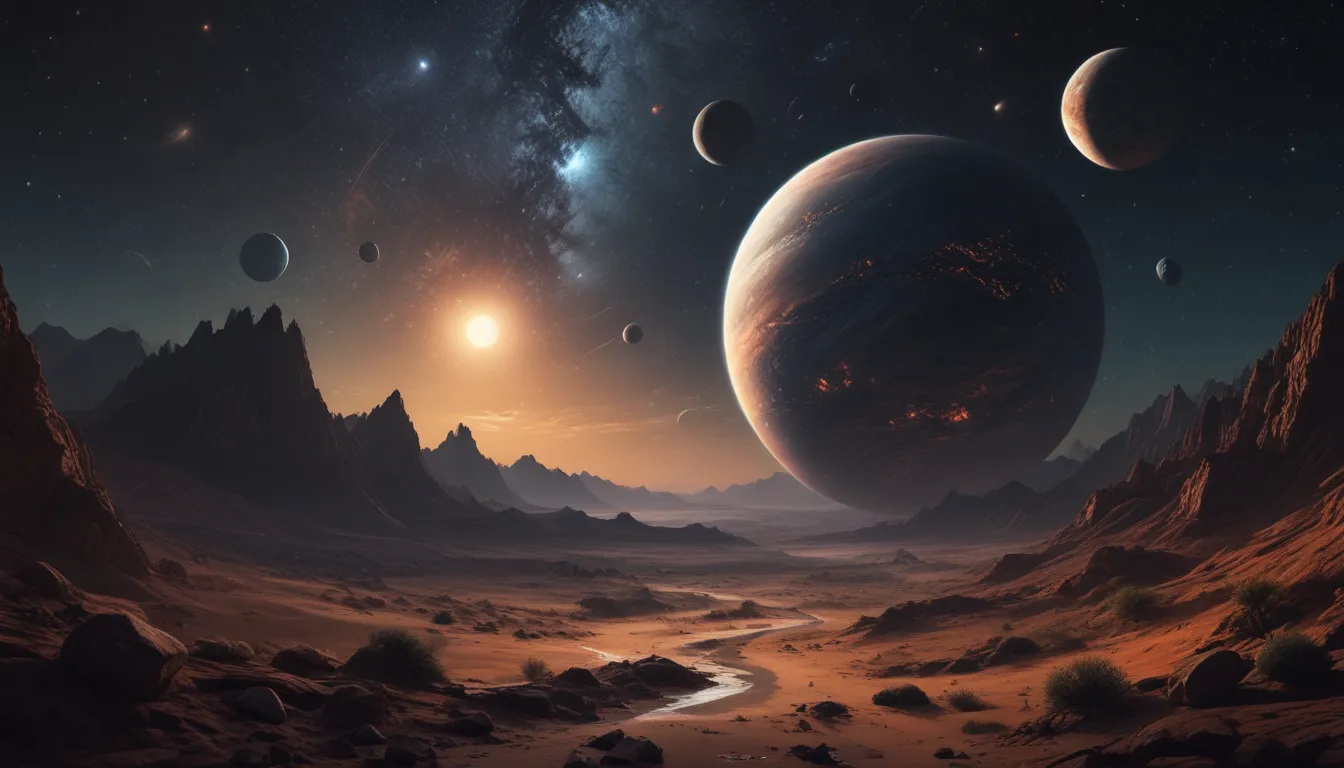The pictures we use in our articles might not show exactly what the words say. We choose these pictures to make you interested in reading more. The pictures work together with the words but don’t take their place. The words still tell you the important facts.
Have you ever gazed up at the night sky and wondered about the mysteries of the planetary systems that surround us? The universe is a vast and enigmatic place, filled with celestial objects that inspire awe and fascination. Among these wonders are planetary systems – intricate networks of planets, moons, asteroids, and comets that orbit around a central star. Each planetary system holds its own unique secrets and surprises, waiting to be uncovered.
Delving into the World of Planetary Systems
Let's embark on a journey across the galaxies as we explore the mysteries and wonders of the vast expanse of space. Our solar system alone is brimming with surprises, from the scorching heat of Venus to the icy rings of Saturn, each celestial body has its own captivating story to tell. Meteorites, which have fallen to Earth from outer space, unlock the secrets of our solar system's composition and history.
Unveiling Fascinating Facts
-
Meteorites:
Meteorites are fragments from space that scientists study to learn about the composition and history of our solar system. -
Jupiter:
The largest planet in our solar system, Jupiter's massive size could fit all the other planets inside it. -
The Sun:
Accounting for 99% of the mass in our solar system, the Sun provides heat and light to all planets orbiting around it. -
Venus:
As the hottest planet in our solar system, Venus reaches temperatures of up to 900 degrees Fahrenheit. -
Neptune:
Neptune, the farthest planet from the Sun, takes 165 Earth years to complete one orbit. -
Asteroid Belt:
Located between Mars and Jupiter, the asteroid belt contains countless rocky objects. -
Saturn's Rings:
Made up of ice particles, Saturn's rings range from tiny grains to massive chunks. -
Earth:
The only known planet to support life, Earth has the perfect conditions for a wide variety of organisms. -
Mars:
Home to the tallest volcano and deepest canyon, Mars boasts impressive geological features. -
Uranus:
Rotating on its side, Uranus appears to roll around the Sun unlike other planets.
Exploring the Diversity of Planetary Systems
-
Mercury:
As the smallest planet in our solar system, Mercury is slightly larger than the Moon. -
Pluto:
Once considered the ninth planet, Pluto was reclassified as a dwarf planet in 2006 due to its size. -
Moons:
Our solar system hosts over 200 known moons with diverse characteristics orbiting planets and dwarf planets. -
Great Red Spot on Jupiter:
A massive storm on Jupiter, the Great Red Spot has been raging for over three centuries. -
Titan:
A moon of Saturn, Titan has a thick atmosphere and rivers of liquid methane. -
Eris:
Discovered in 2005, Eris is larger than Pluto and part of the Kuiper Belt.
Conclusion: A Universe Full of Possibilities
In conclusion, the universe is a vast and mysterious place, brimming with wonders waiting to be discovered. Understanding planetary systems and their components is crucial to unraveling the secrets of our existence. From exoplanets to the unique characteristics of each planetary system, there is a wealth of fascinating facts to explore.
Delve into the intricacies of planetary systems and gain a deeper appreciation for the beauty and complexity of the cosmos. Whether it's the diverse range of planets, the complex interactions between celestial bodies, or the potential for extraterrestrial life, the study of planetary systems continues to captivate scientists and enthusiasts alike.
So, next time you gaze up at the night sky, take a moment to marvel at the wonders of our planetary system and remember that there is still so much more to discover.
FAQs: Answering Your Curiosities
Q: How many planets are there in our solar system?
A: There are eight planets in our solar system, including Mercury, Venus, Earth, Mars, Jupiter, Saturn, Uranus, and Neptune.
Q: Can life exist on other planets within a planetary system?
A: While it is a possibility, scientists are still searching for definitive evidence of extraterrestrial life.
Q: What is an exoplanet?
A: An exoplanet is a planet that orbits a star outside of our solar system, playing a crucial role in understanding planetary diversity.
Q: How do scientists discover planetary systems?
A: Scientists use various methods like the transit method and radial velocity method to detect planets within planetary systems.
Trustworthy Information for Curious Minds
Our commitment to delivering trustworthy and engaging content is reflected in the diverse insights and information contributed by real users like you. Each fact is meticulously reviewed by our dedicated editors to ensure accuracy and reliability. Explore and learn with us, knowing that the facts we share are not only fascinating but also credible. Trust in our commitment to quality and authenticity as you delve into the wonders of planetary systems and beyond.






